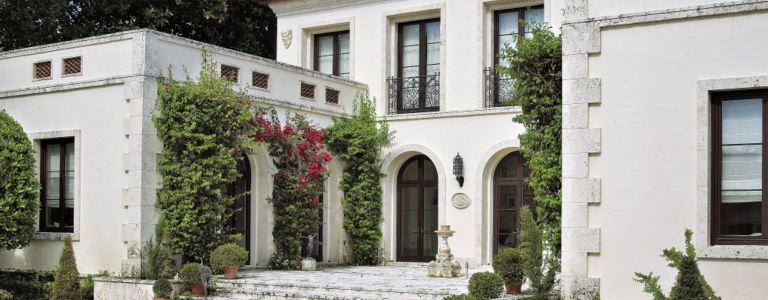
What do I look for when buying a Mediterranean Revival Home in Miami?
I get asked what to look for when buying a Mediterranean Revival Home, all the time! And it doesn’t matter if you are a historic preservation buff or if you simply like the Mediterranean Revival style, working with the right professional that has a passion for these homes is key. (<not so shameless plug. I am your Miami Historic Homes Realtor afterall) 
What to look for when buying a Mediterranean Revival Home in Miami
- How original is the house – what transformations has the home gone through in the past years and what additions and renovations have been completed that may not only not be original, but may have changed the original character.
- Which features are original and still intact from when the home was built?
- roof (Historic Cuban Tile, parapets, etc)
- flooring – hardwood floors, Cuban tile, quarry
- bathrooms – original fixtures and tile
- mill-work – baseboards, crown molding, cabinetry, door casings, wood beams
- metal work – balcony and stairway railings, decorative grills
- stucco – plaster on interior and exterior walls as well as ceilings
- windows – wood casement windows or wood single/double hung windows
- fixtures – lamps, sconces, etc
- hardware – door hardware, knobs and pulls
- What is the condition of those original features (will you be able to match them or repair them)
- How easy is it to modernize the home without affecting its historical integrity? Or how can you supplement that integrity.
- Mediterranean Revival homes did not have central air conditioning or heat. It’s important to study how to effectively install an a/c system with as little interference to original structure.
- 2-story homes usually have 2-zone a/c systems to avoid soffits for a/c ducts.
- You can expect galvanized plumbing and cast iron pipes. Most home owners replace pipes as they remodel and many times it can be done without tearing out existing finishes.
- May owners also remodel bathrooms and although they completely modernize them, they pay special attention to original details to be able to mimic those with new construction.
- Electrical systems were fuses and cloth wiring in the 20’s and need to be upgraded to breakers. This is key for fire safety.
- If the house has a Historic Cuban Tile roof but needs to be replaced, there are roofing companies that specialize in salvaging the tile and reusing it for the new roof. See also: What is the right type of roof for a Mediterranean House?
- Modernizing a 1920’s house can be a challenge, windows are my pet peeve. When replacing windows, the original proportion needs to be respected so that the final look and feel of the house is not changed. See also: What is the right type of window for a Mediterranean house?
- Bathrooms can be tricky, visit historic homes to get a feel for the finishes, colors and materials used in the 20’s. Pay attention to rectangular wall tiles placed horizontally and wainscoting as well as beaded boards. Honeycomb floors tiles, black and white as well as neutral schemes were common.
- I think you would agree that kitchens have changed quite a bit and have become the center of our homes. It is not unusual to walk into a grandiose Mediterranean Revival home with a very small kitchen. It IS possible to increase the size to modern standards while respecting the scale of the original home. Think of timeless, natural materials.
- Pay attention to the front door of the home. It is the most ignored feature of a historic home and one of the most important. The front door will set the stage for the rest of the home, make sure that it matches the period together with its hardware. See also: First Impressions in Real Estate
- Quarry tile floors came in all kinds of shapes and colors. Even when they are dirty and look bad, they can be restored to perfection. The same applies to hardwood floors.
- Pay attention to original hand-painted features throughout the home. Hand-painted wood beams, chair rails and stair railings are very common. I have seem complete restorations where hand-painted features are preserved and matched – these can be breath-taking.
- Keep an eye out for structural flaws. It is typical to see settling of floors as well as hairline cracks. Many 20’s homes have needed structural reinforcements throughout the years. When it doubt, it’s not a bad idea to hire a structural engineer to assess issues.
- Water intrusion repairs are also common but are not difficult to repair. Bubbling plaster is not necessarily an indication of water intrusion. Since organic plaster was used, plaster may continue to bubble even after the leak was repaired.
Now that I’ve scared you, please know that historic homes do take a lot of work and restoration can be difficult. But what’s more important is that historic homes hold their value and have a specific market audience that is willing to pay more. Historic homes “historically sell for more” (<like how I did that?). I’ve owned and have personally worked on historic homes throughout the years as well as served on historic preservation boards and continue to be a voice for the National Trust for Historic Preservation. I am your Miami Historic Homes Realtor and will share all my knowledge and passion with you, my real estate clients.
(pen and ink rendering above by yours truly: Ines Hegedus-Garcia) **originally published 5/6/2015
2 thoughts on “What do I look for when buying a Mediterranean Revival Home in Miami?”
Comments are closed.

What do I look for when buying a Mediterranean Revival Home in Miami? http://t.co/Fb87A8Y1of
What do I look for when buying a Mediterranean Revival Home in Miami? http://t.co/5gymb5FDqE